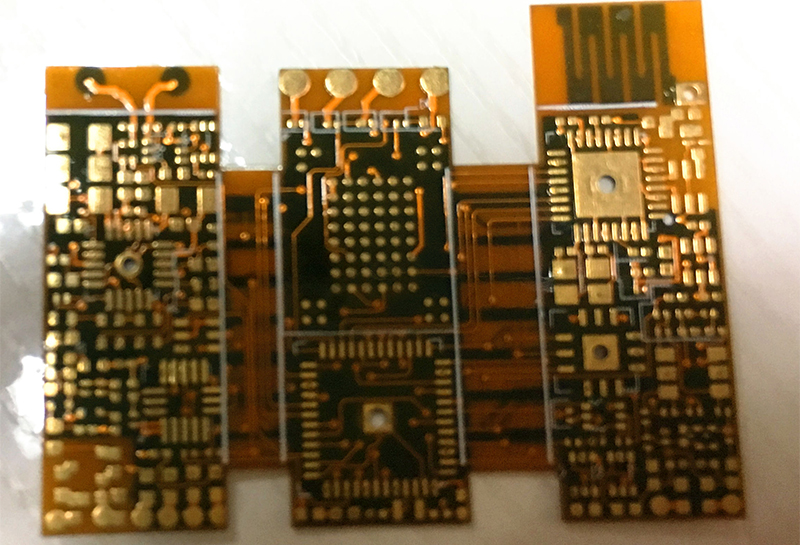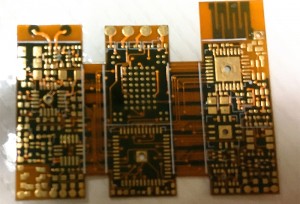
Products
4 layer FPC with FR4 stiffener in 4G module system
| Layers | 4 layers flex |
| Board thickness | 0.2mm |
| Material | Polymide |
| Copper thickness | 1 OZ(35um) |
| Surface Finish | ENIG Au Thickness 1um; Ni Thickness 3um |
| Min Hole(mm) | 0.23mm |
| Min Line Width(mm) | 0.15mm |
| Min Line Space(mm) | 0.15mm |
| Solder Mask | Green |
| Legend Color | White |
| Mechanical processing | V-scoring, CNC Milling(routing) |
| Packing | Anti-static bag |
| E-test | Flying probe or Fixture |
| Acceptance standard | IPC-A-600H Class 2 |
| Application | Automotive electronics |
Introduction
A flex PCB is a unique form of PCB that you can bend into desired shape. They are typically used for high density and high temperature operations.
Due to its excellent heat resistance, the flexible design is ideal for solder mounting components. The transparent polyester film used in constructing the flex designs serves as the substrate material.
You can adjust the copper layer thickness from 0.0001″ to 0.010″, while the dielectric material may be between 0.0005″ and 0.010″ thick. Fewer interconnects in a flexible design.
Therefore, there are fewer soldered connections. Additionally, these circuits take up only 10% of the rigid board space
because of their flexible bendability.
Material
Flexible and movable materials are used to manufacture flexible PCBs. Its flexibility allows it to be turned or moved without irreversible damage to its components or connections.
Every component of a flex PCB must function together to be effective. You will need various materials to assemble a flex board.
Cover Layer Substrate
Conductor carrier and insulating medium determine the function of substrate and film. Additionally, the substrate must be able to bend and curl.
Polyimide and polyester sheets are commonly used in flexible circuits. These are just a few of the many polymer films you might get, but there are many more to choose from.
It is a better choice due to low cost and high quality substrate.
PI polyimide is the most commonly used material by manufacturers. This type of thermostatic resin can resist extreme temperatures. So melting is not a problem. After thermal polymerization, it still retains its elasticity and flexibility. In addition to this, it has excellent electrical properties.
Conductor Materials
You must choose the conductor element that transfers power most efficiently. Almost all explosion proof circuits use copper as the primary conductor.
Besides being a very good conductor, copper is also relatively easy to obtain. Compared to the price of other conductor materials, copper is a bargain. Conductivity is not enough to dissipate heat effectively; it must also be a good thermal conductor. Flexible circuits can be made using materials that reduce the heat they generate.

Adhesives
There is an adhesive between the polyimide sheet and the copper on any flex circuit board. Epoxy and acrylic are the two main adhesives you can use.
Strong adhesives are required to handle the high temperatures produced by copper.











